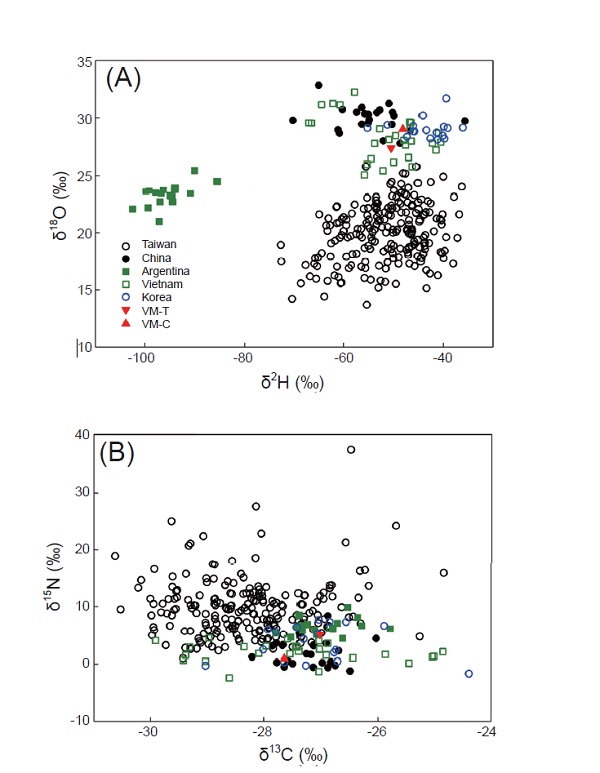All issues
Author:Jhen-Nan Lin, Tsung-Ren Peng, Po-Hsuan Wang, Yu-Wen Lin, and Tsang-Sen Liu*
Abstract:
This experiment used chemometrics approach to discriminate the geographical origin of tea and garlic. The chemometrics, based on the multivariate analysis, statistically process the trace element concentration and isotopic composition data of agricultural samples studied to establish a discriminant function for each geographical origin. The discriminant function was used to estimate the geographical origin of the tea and garlic studied. The tea samples were taken from Taiwan, China, Vietnam, Thailand, and Indonesia, and the garlic samples were from Taiwan, Argentina, Korea, China, and Vietnam. The results show that the overall discrimination rate of this approach in differentiating the geographical origin of tea was about 96%, and the highest discrimination rate of individual geographical areas was 100%. For comparison, the corresponding discrimination rates of the garlic test were 93% and 100%, respectively. In addition to the excellent discriminant results, some research experiences can be important references for follow-up related research: (1) Trace elements are the most important factor while discriminating the geographical origin of crop production areas; if isotopic data are added, the discrimination rate can be elevated. (2) Minimizing the number of regions involved in the chemometric analysis can elevate the discrimination rate of the blind sample. (3) The most relevant independent variables should be screened out as far as possible to optimize the discriminant function.
Key words:Chemometrics, Discriminant rate of geographical origin, Tea, Garlic
Download:![]() PDF Links
PDF Links
- 1. Using Digital Soil Mapping to Predict Soil Organic Carbon Stocks in Zhuoshui River Basin
- 2. Taxonomic Review of the Genus Asiophrida Medvedev, 1999 in Taiwan (Insecta: Coleoptera: Chrysomelidae: Galerucinae: Alticini), with Notes on Biology
- 3. Development of a Technique for Forecasting (or Pre-Detection) Anthracnose Disease Incidences of Green Mature Bagging Mango Fruits

 Submit your manuscript
Submit your manuscript
 Guide for authors
Guide for authors